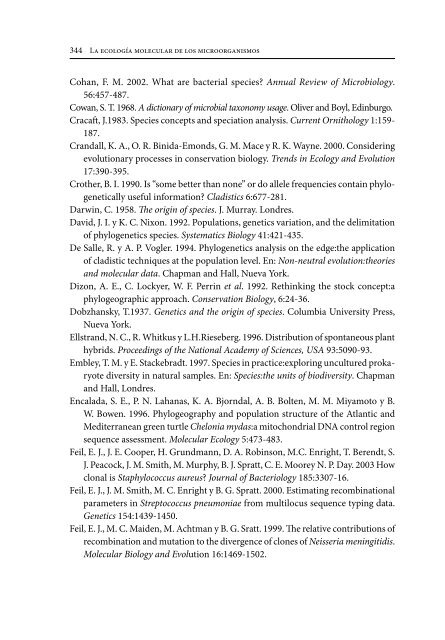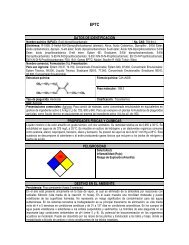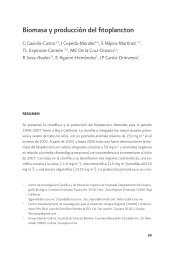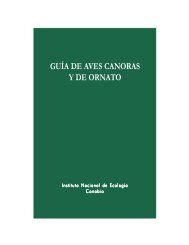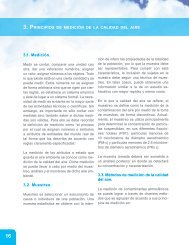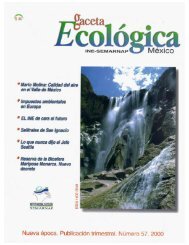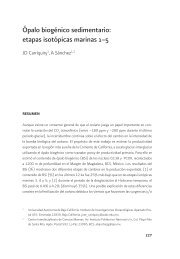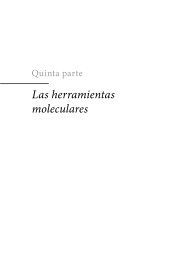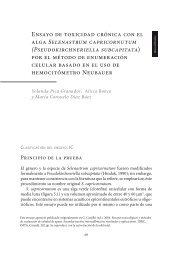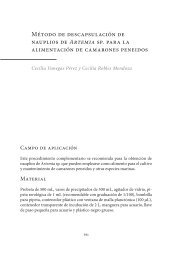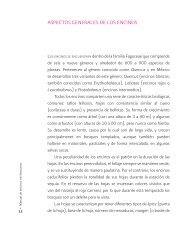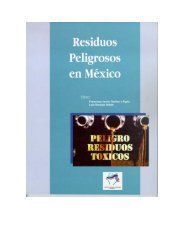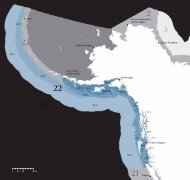La especie como unidad evolutiva: uso de marcadores moleculares ...
La especie como unidad evolutiva: uso de marcadores moleculares ...
La especie como unidad evolutiva: uso de marcadores moleculares ...
You also want an ePaper? Increase the reach of your titles
YUMPU automatically turns print PDFs into web optimized ePapers that Google loves.
344<br />
<strong>La</strong> ecología molecular <strong>de</strong> los microorganismos<br />
Cohan, F. M. 2002. What are bacterial species? Annual Review of Microbiology.<br />
56:457-487.<br />
Cowan, S. T. 1968. A dictionary of microbial taxonomy usage. Oliver and Boyl, Edinburgo.<br />
Cracaft, J.1983. Species concepts and speciation analysis. Current Ornithology 1:159-<br />
187.<br />
Crandall, K. A., O. R. Binida-Emonds, G. M. Mace y R. K. Wayne. 2000. Consi<strong>de</strong>ring<br />
evolutionary processes in conservation biology. Trends in Ecology and Evolution<br />
17:390-395.<br />
Crother, B. I. 1990. Is “some better than none” or do allele frequencies contain phylogenetically<br />
useful information? Cladistics 6:677-281.<br />
Darwin, C. 1958. The origin of species. J. Murray. Londres.<br />
David, J. I. y K. C. Nixon. 1992. Populations, genetics variation, and the <strong>de</strong>limitation<br />
of phylogenetics species. Systematics Biology 41:421-435.<br />
De Salle, R. y A. P. Vogler. 1994. Phylogenetics analysis on the edge:the application<br />
of cladistic techniques at the population level. En: Non-neutral evolution:theories<br />
and molecular data. Chapman and Hall, Nueva York.<br />
Dizon, A. E., C. Lockyer, W. F. Perrin et al. 1992. Rethinking the stock concept:a<br />
phylogeographic approach. Conservation Biology, 6:24-36.<br />
Dobzhansky, T.1937. Genetics and the origin of species. Columbia University Press,<br />
Nueva York.<br />
Ellstrand, N. C., R. Whitkus y L.H.Rieseberg. 1996. Distribution of spontaneous plant<br />
hybrids. Proceedings of the National Aca<strong>de</strong>my of Sciences, USA 93:5090-93.<br />
Embley, T. M. y E. Stackebradt. 1997. Species in practice:exploring uncultured prokaryote<br />
diversity in natural samples. En: Species:the units of biodiversity. Chapman<br />
and Hall, Londres.<br />
Encalada, S. E., P. N. <strong>La</strong>hanas, K. A. Bjorndal, A. B. Bolten, M. M. Miyamoto y B.<br />
W. Bowen. 1996. Phylogeography and population structure of the Atlantic and<br />
Mediterranean green turtle Chelonia mydas:a mitochondrial DNA control region<br />
sequence assessment. Molecular Ecology 5:473-483.<br />
Feil, E. J., J. E. Cooper, H. Grundmann, D. A. Robinson, M.C. Enright, T. Berendt, S.<br />
J. Peacock, J. M. Smith, M. Murphy, B. J. Spratt, C. E. Moorey N. P. Day. 2003 How<br />
clonal is Staphylococcus aureus? Journal of Bacteriology 185:3307-16.<br />
Feil, E. J., J. M. Smith, M. C. Enright y B. G. Spratt. 2000. Estimating recombinational<br />
parameters in Streptococcus pneumoniae from multilocus sequence typing data.<br />
Genetics 154:1439-1450.<br />
Feil, E. J., M. C. Mai<strong>de</strong>n, M. Achtman y B. G. Sratt. 1999. The relative contributions of<br />
recombination and mutation to the divergence of clones of Neisseria meningitidis.<br />
Molecular Biology and Evolution 16:1469-1502.


